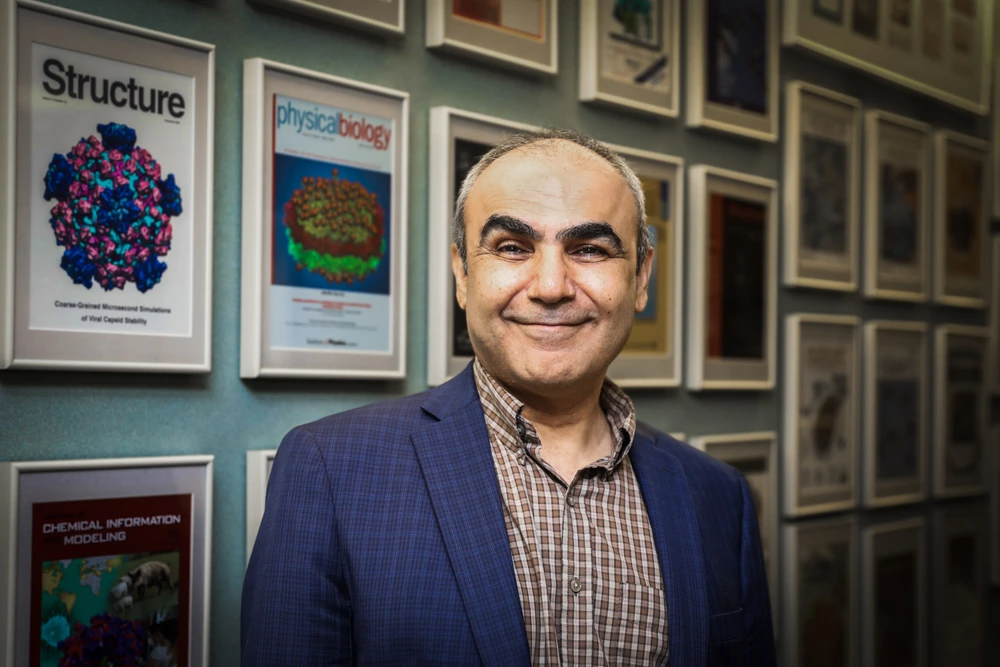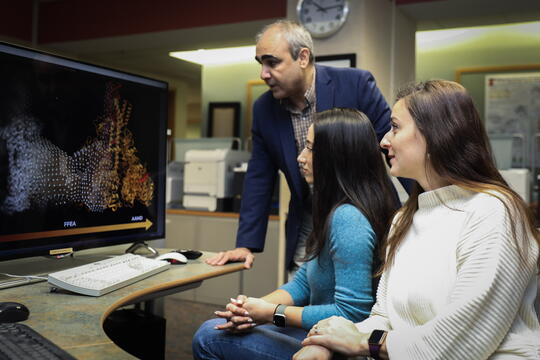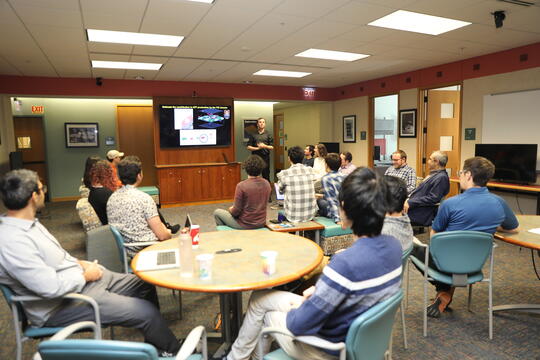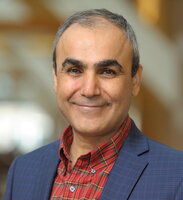
Since its launch more than three decades ago, researchers with the Macromolecular Modeling and Bioinformatics Center at the University of Illinois have developed powerful modeling, simulation, and visualization software tools that help researchers better understand the complex biomolecular and cellular processes associated with human health and disease.
The School of Molecular & Cellular Biology and the Department of Biochemistry are pleased to announce the National Institutes of Health has renewed the center’s funding for another five years, allowing scientists to continue their work creating open-source software and other programs for researchers who aim to develop new drug treatments or medical diagnostic tools.
“This is fantastic news, since the new round of funding will allow us to continue to maintain our software programs that are literally used by hundreds of thousands of users. We need the support to ensure that the programs properly run on so many emerging hardware platforms and constantly changing operating systems," said Emad Tajkhorshid, J. Woodland Hastings Endowed Chair and Professor of Biochemistry, and director of the center.

The team includes about 60 research scientists, postdoctoral researchers, graduate students from different disciplines, and software developers.
Since its early days, the group has evolved into a major center for computational biophysics in the world, said Satish Nair, Gregorio Weber Chair and head of the Department of Biochemistry. The multidisciplinary team collaborates with leading experimental laboratories by providing them with a “computational microscope” that is equipped with molecular visualization, sequence, and structure and dynamics analysis capabilities. The software programs developed by the group, NAMD, VMD, and Lattice Microbes, are free and open source.
“Just in our department alone, several research labs and students have been impacted in major ways through their interactions and collaborations with the center," according to Nair.

Examples of these fruitful interactions include revealing O2 diffusion pathways in proteins involved in cellular metabolism, dissecting the way T cells determine their targets, helping model the complex IgA structure, and developing a molecular structure for membrane-bound antibodies against the influenza virus.
The new grant provides $5.7 million over five years. Looking to the next couple years, Tajkhorshid and collaborators plan to expand the computational tools to a broad range of biomedical research problems and provide easy access to these tools for the biomedical research community.
Some of the specific goals include improving the performance, efficiency, and accuracy of simulations for cellular processes at long time and large length scales; providing accessible support for simulation tools; lead implementation of state-of-the-art technologies in GPU, petascale, and pre-exascale computing into biomedical research at the molecular and cellular level; support visualization and analysis of biomolecular systems with powerful, customizable software packages, integrating multi-modal experimental imaging (e.g., cryo-electron microscopy and tomography, X-ray, NMR) and -omics data with model building and simulation tools. Additional goals include enhancing performance for visualization, analysis, and modeling of large-size and long-timescale cellular processes by exploiting emerging technologies such as GPU acceleration, remote visualization, and non-volatile memory; developing methods to model whole cell behavior and large cellular components such as membrane environments and chromatin; scaling coarse-grained simulation methods to eukaryotic-sized cells; driving the development of novel computational tools and methods through collaborations with both theoretical and experimental laboratories; enhancing service, training, and dissemination with the use of electronic textbooks and videos, providing a cutting edge computational laboratory, cloud computing resources, hands-on training, first-rate educational material, and an extensive, widely-used website to biomedical researchers.

Funding for the center comes from the NIH’s National Institute of General Medical Sciences, which supports basic research that increases our understanding of biological processes and lays the foundation for advances in disease diagnosis, treatment, and prevention.

